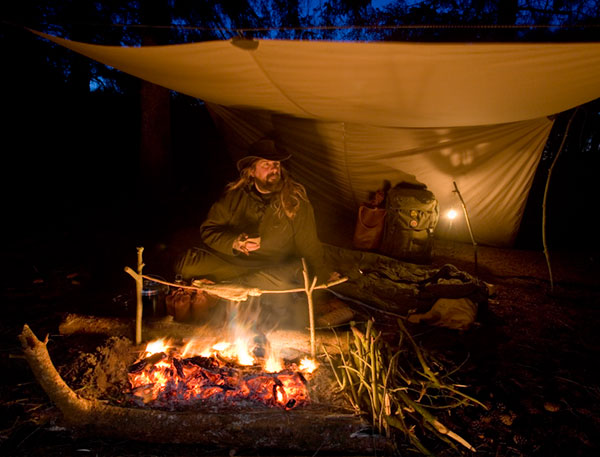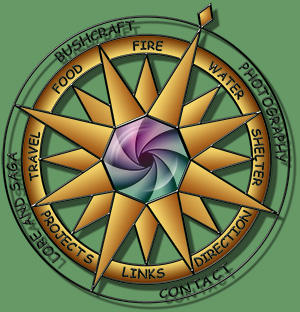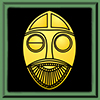 | |||
 | |||
Cooking on an open fire All too often I have seen people trying to cook over a roaring fire and having a great deal of trouble too. If you think about the size of fire you cook on at home (a gas or electric hob probably) you will soon realise that a small fire is going to be much easier to cook over. If you are forced to cook over a fire larger than you need, try to make a small area in the side of the fire that you can control more easily. | |||||||
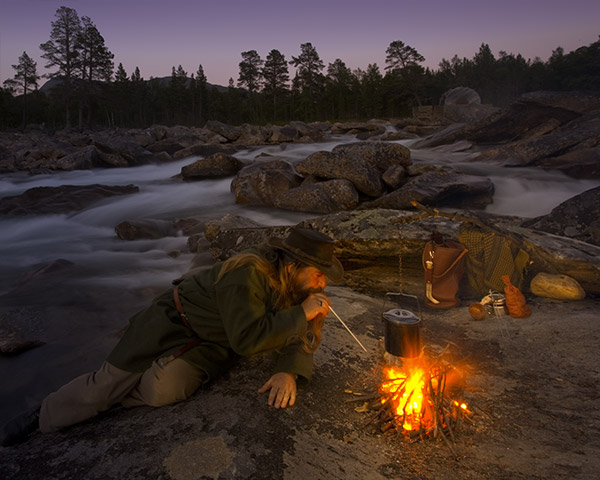 | |||||||
A vital point I will raise is, think very carefully about the site of your fire, do not light a fire in close woodland, on dry peat or in areas where open fire is prohibited. In these areas you should use a stove instead. Sometimes a site may have a fireplace that has been used before, if this is well established and in regular use then it may be suitable for use again. Try to avoid making new fire scars. In some of the pictures seen here the fire was built on a pile of stones above the ground surface and had been used for a number of years. It still required rebuilding to reduce itís size and cleaning out before I used it. I also removed a small satellite fire place that had recently appeared to give the ground a chance to recover. | |||||||
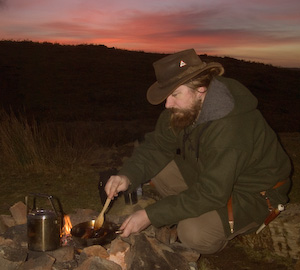 | |||||||
In all other places you should aim to leave no trace of your fire when you leave. When I am laying out a fireplace, I usually try to save two or three stones that can be laid in the area I want to cook to act as a pot rest. Always make sure such stones are not waterlogged as the heat can cause such stones to burst with violent force. If such stones are unavailable logs can be substituted but will mean your cooking should be done before they burn away. The amount of cookware your carry will depend on how much you want to carry and the type of food you wish to prepare. Above you can see a small billy can for boiling and a mini wok for frying. My usual cooking set varies according to need but if you want to go lighter you can boil in a metal cup and roast on a skewer. |
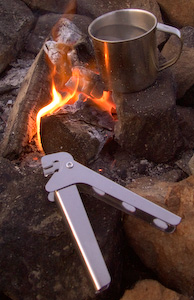 | ||||||||
If you are intending to boil with a metal cup it is wise to carry a pot grip to move the cup in and out of the fire. I find a wooden spoon to be a very useful item when cooking. My own spoon which is longer than a normal eating spoon also has graduations marked on it to measure quantities in the billy can. Skewers can be cut from green sticks but a metal one weighs next to nothing and is much more reliable. donít forget to insulate the ends of the skewers or use a glove to move them about if they have been over the fire for any length of time. | ||||||||
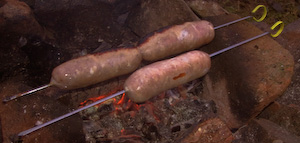 | ||||||||
Iím not going to say much about ingredients in your cooking because your tastes will probably be different from mine. I do carry a few condiments and essentials in my kit and they often repay their extra weight with the pleasure of a good meal at the end of the day. The collection you see here contains a variety of spices, grapeseed oil for frying, herbs, parmesan cheese, a variety of stock cubes, part boiled rice, and my water purification kit. To the left of the picture is a light aluminium tube which I use as a blow poker to encourage the fire from time to time as you can see in the picture above. | ||||||||
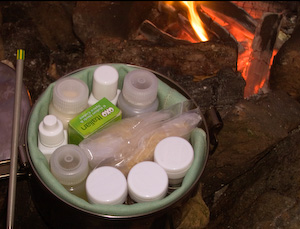 | ||||||||
|
|
Cooking over and use of an open fire should only be done where it is safe to do so and with the permission of the land owner. In all other places, use a stove. |
|
|
|
Bushcraft and wilderness skills should always be practised with respect for the environment and other users of the outdoors. Leave No Trace. All text, images and artwork on this site are the property of Gary Waidson and protected by copyright. All rights reserved. |
 | |||||||||||||||
 | |||||||||||||||
 | |||||||||||||||
 | |||||||||||||||
 | |||||||||||||||
 | |||||||||||||||
 | |||||||||||||||
 | |||||||||||||||
 | |||||||||||||||
 | |||||||||||||||
 | |||||||||||||||
 | |||||||||||||||
 | |||||||||||||||
 |
|||||||||||||||
 | |||||||||||||||
 | |||||||||||||||
 | |||||||||||||||
 | |||||||||||||||
 | |||||||||||||||
 | |||||||||||||||
 | |||||||||||||||
 | |||||||||||||||
 | |||||||||||||||
 | |||||||||||||||
 | |||||||||||||||
 | |||||||||||||||
 | |||||||||||||||
 | |||||||||||||||
 | |||||||||||||||
 | |||||||||||||||
 | |||||||||||||||
 | |||||||||||||||
 | |||||||||||||||
 | |||||||||||||||
 | |||||||||||||||
